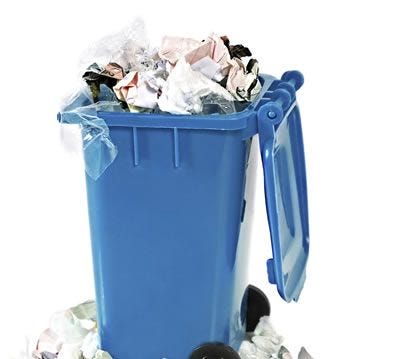





Raccoons
How to Trap a Raccoon
Trapping a raccoon in a live trap is a humane way to remove one of these destructive critters from your property. You can do so by following the helpful step-by-step trapping instructions below.
1 Select a Raccoon Trap

The best live traps for raccoons are large to extra-large in size (about 32 - 42 inches in length). Most traps come in either 1 or 2-door models from which you can choose:
| 1-Door |
|
| 2-Door |
|
2 Determine Trap Placement

Place your trap in an area where you've seen raccoon damage, or in an area where a raccoon may live. Raccoons generally prefer covered areas like:
- attics
- porches
- mulch beds
- sheds
- woodpiles
- along walls
- underneath structures
- tree hollows
- fence lines
Be sure to place your trap on an even surface.

3 Bait Your Trap
- Raccoons prefer sweet foods like marshmallows or watermelon.
- Properly positioning the bait is crucial to success. Be sure to place the bait so the raccoon must fully enter the trap to reach it - see image for details.
- Raccoons can knock over a trap in attempt to steal the bait. Secure your trap by placing a weight or brick on top of it.
- For more bait options and expert tips, read How To: Raccoon Baits »

4 Set Your Trap
Carefully set the door(s) to the open position.
Each trap sets differently - follow your trap's unique instructions. Once set, test the trigger and close mechanism by pressing on the trigger plate.
TIP: For perfect setting every time, check out our Easy Set® technology »

5 Check Trap Often
Once a raccoon is trapped, it can quickly become scared and anxious. It is very important to check on your trap regularly. It could take anywhere from a few minutes to a couple of days to catch a raccoon. Regardless, never leave an animal trapped for an extended period of time.

6 You've Caught a Raccoon!
- Be gentle and speak softly when approaching and handling the trap.
- Drape a cloth over the cage to keep the raccoon calm.
- Hold the cage away from your body, and wear heavy gloves.
- If relocating, take raccoon at least 5 miles away from property.

7 Remove Attractants
Raccoons invade your property in search of food, water and shelter. After removing the raccoon keep them out by doing the following:
- eliminating food/water sources
- removing trash
- washing garbage cans
- closing gate/fence gaps
- fixing broken vents/screens
- closing windows
Expert Tips
- Get to know the laws in your area before trapping and relocating a raccoon.
- Before trapping a raccoon, clean up any potential food sources and secure trash bins to ensure that the only attractant is your bait.
- Always wear gloves when handling a live trap - even when it's empty. Gloves will protect you from a trapped animal and will keep you from transferring your scent onto the trap.
- Raccoons are very intelligent and have great memories, which may make them wary of traps. Try getting them acquainted with your trap by tying it open and leaving bait inside for a few days before setting it for a catch.
- After removing your raccoons with a live trap, keep them out with Safer® Brand Critter Ridder® Animal Repellent Granulars.
